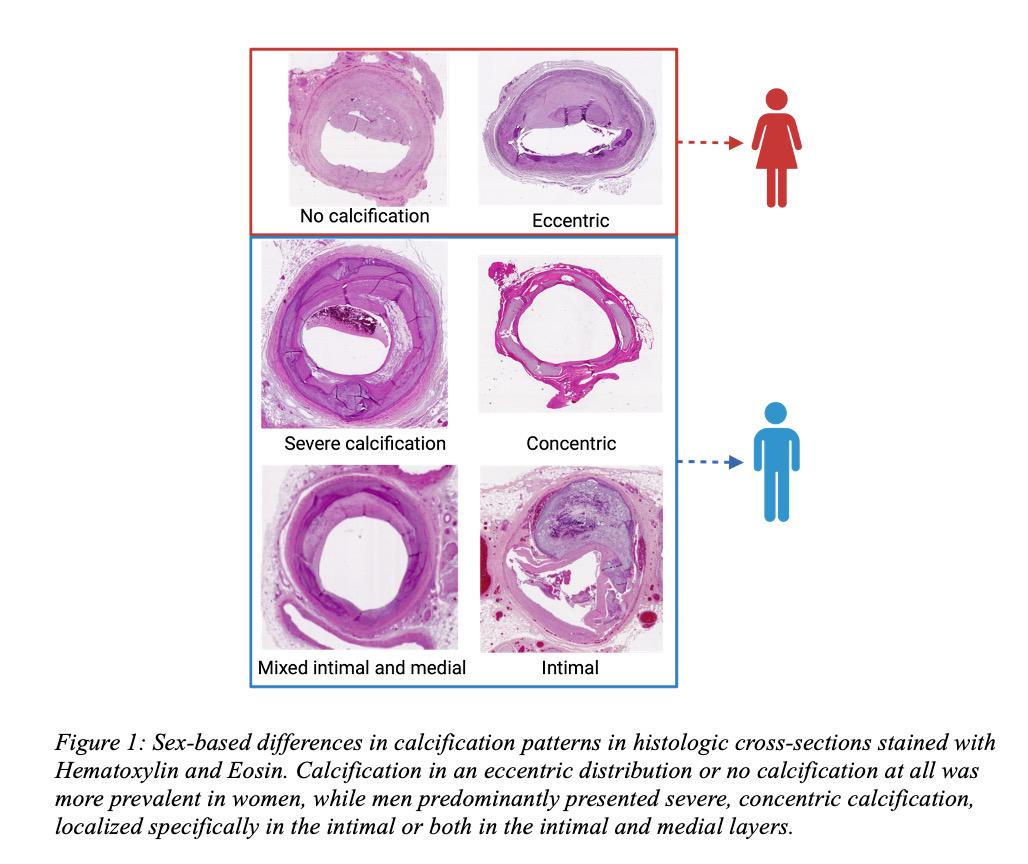ObjectivesChronic lower extremity peripheral artery disease (PAD), as a complex condition, is influenced by various factors. Our study aimed to identify differences in the presentation of calcification distribution in histologic samples between men and women, which may aid personalized treatment planning and device selection, ultimately leading to better procedural outcomes.Methods: We collected a total of 33 amputated lower limbs from 32 end-stage PAD patients. Below-the-knee arteries were harvested and cross-sectioned at 3-4 mm intervals. Histochemical staining using hematoxylin-eosin and Movat's pentachrome was performed on sections from each arterial ring, and subsequently analyzed by an expert cardiovascular histopathologist for various lesion characteristics. Calcification patterns were recorded as follows: presence of calcified plaque (Yes/No), degree of calcification (1-100% of circumference), calcified plaque geometry (eccentric if <75%, concentric if >75% of the circumference is affected), localization (predominantly intimal (≥ 60%), predominantly medial (≥ 60%), or mixed), percent stenosis (0-20%, 20-40%, 40-70%, 70-100%). Results: 32 patients (mean age: 71±9.1 years; 15 women) yielded 155 arterial segments, from which 1,231 histologic cross-sections were obtained (men: n=744; women: n=487). Cross-sections obtained from women showed a higher proportion without calcification compared to those from men (35.7% vs. 12.6%, respectively, p<0.001). Severe, concentric calcification (75-100% of the vessel circumference) was more prevalent in cross-sections from men (44.7%) compared to women (33.1%, p<0.001). Women displayed a higher prevalence of eccentric plaque geometry (66.9% vs. men: 55.3%, p<0.001). Men exhibited more predominantly intimal (26.0%, vs. women 22.5%; p=0.001), and mixed (20.5% vs. women 11.3%, p<0.01) calcification. Higher degree of stenosis between 70-100% was more prevalent in women (42.1%) compared to men (34.4%, p=0.024). Conclusion:Women were more likely than men to display eccentric distribution, while men predominantly presented with intimal or mixed, and severe, concentric calcification. Calcification manifestation was also noted to be increasingly severe in men (Figure 1), which may pose specific issues during peripheral vascular interventions. However, women exhibited a higher degree of stenosis. Further studies are needed to evaluate how these sex-based differences may affect therapeutic decision-making and the outcome of revascularization procedures.
